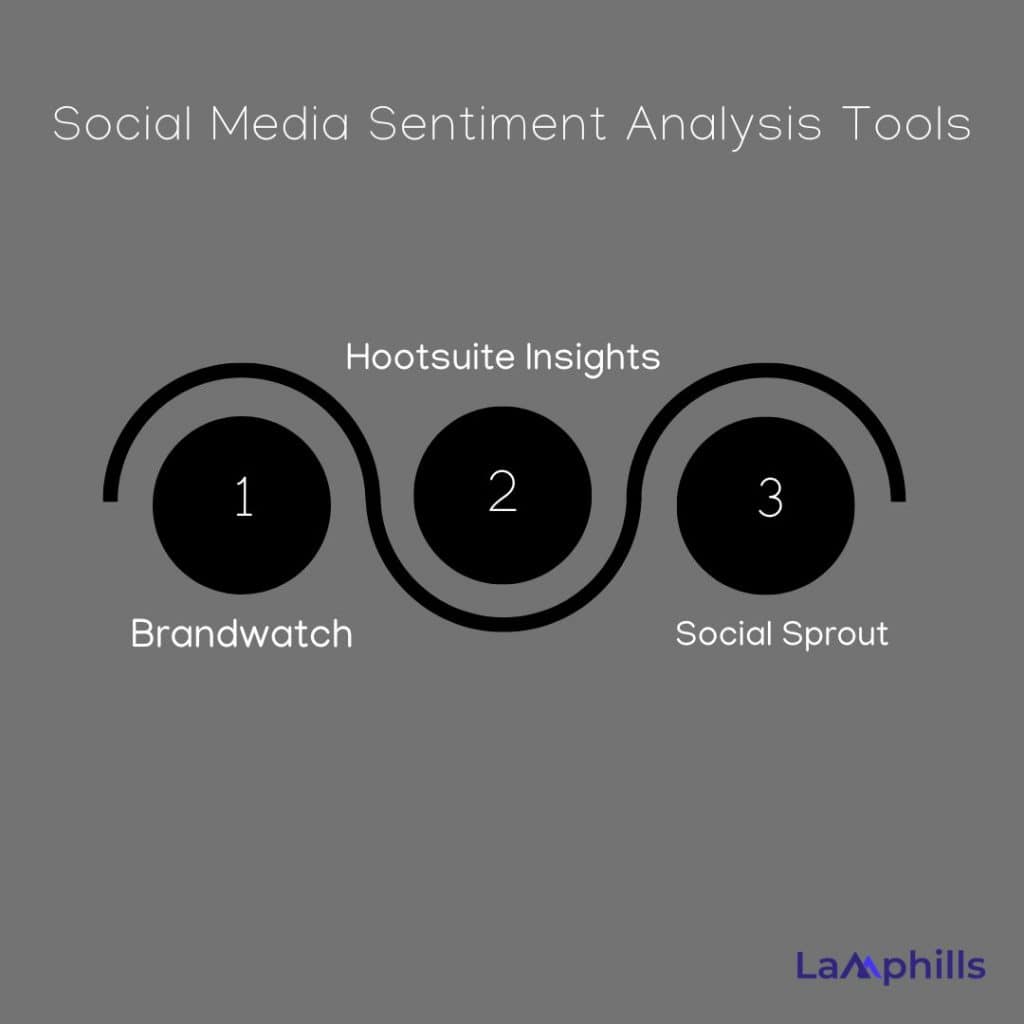In the modern digital environment, organizations need to understand the feelings of their customers on social media. Beyond straightforward indicators like likes and shares, social sentiment analysis provides information about how consumers actually feel about a business. Sorting online interactions into good, neutral, and negative categories allows brands to keep an eye on public opinion and modify their tactics as necessary. With my experience running social media, I discovered that understanding sentiment improved marketing efforts, promoted consumer loyalty, and assisted with crisis management. In the end, establishing and preserving a favorable brand reputation required the use of social sentiment analysis. This article discusses sentiment analysis on social media and how to apply it to your brand’s reputation.
Key Points
- Social media sentiments are the emotional reactions that consumers have to a brand on the internet, whether they be favorable, unfavorable, or neutral.
- A brand’s entire social media reputation can be determined by looking at net sentiment, which displays the ratio of positive to negative mentions.
- To assess the brand’s social media health, sentiment is determined by classifying mentions and applying a formula to get the net sentiment score.
- The components of a well-written sentiment analysis report are an introduction, an overview of the findings, a sentiment breakdown, important data, suggestions, and a conclusion.
- Campaign enhancement, customer satisfaction, crisis management, and brand reputation are all improved using sentiment analysis.
Understanding Social Media Sentiment
Through a review of the tone of online interactions, social media sentiment analysis helps determine whether consumers have a positive, neutral, or negative opinion of a brand. What individuals say and feel when they mention a brand is much more significant than the number of mentions. Sentiment analysis is also an automated method that gathers and examines data on how people discuss your brand on social media and pinpoints the emotional tone (positive, negative, or neutral) of that conversation to help you understand how your brand is regarded.
Social media monitoring technologies employ natural language processing (NLP) and machine learning (ML) to assess and categorize the sentiment conveyed in posts and comments on social media, as well as determine if a message is neutral, negative, or positive. I ran upon sentiment analysis for the first time when a marketing effort created a lot of talk. Everything appeared to be going well on the surface—conversations were taking place, likes and shares were up. However, it was in the replies and comments that I started to notice that individuals were complaining about the quality of the product. It was an awakening. It wasn’t until the issue had gotten out of hand that I discovered that, despite the high raw figures, sentiment was increasing negatively.
Sentiment analysis on social media changed my life. It made it possible for me to get past statistics and understand the more fundamental emotional bond that consumers had with the company. By listening to people’s emotions, I was able to react in ways that preserved the brand’s reputation and strengthened bonds with clients.
My Journey
In a very competitive business, I was in charge of a brand’s social media presence a few years ago. The brand’s reputation depended on how the public viewed it; thus, the stakes were high. I then saw the full potential of social media sentiment research, which fundamentally changed the way I managed the brand’s online reputation.
My first goal was to increase the brand’s likes, engagement, and followers. After a while, I observed something troubling, even if these vanity measures seemed to be the ultimate sign of accomplishment. Although the numbers were increasing, the gap between the brand and its target audience was widening. There was positive interaction, but behind the surface, complaints and unfavorable remarks were silently mounting.
One day, a simple product issue turned into a nightmare for public relations. The audience’s opinion of the brand became the main focus instead of the goods. When I looked at engagement numbers alone, I concluded it was insufficient. I needed to learn more about people’s emotions as well as their internet activities. I started using sentiment analysis on social media at that point.
Sentiment research showed me that identifying brand advocates was just as important as responding to crises. Long-term relationships and increased consumer loyalty were created by interacting with people who provided favorable feedback. I was able to safeguard and improve the brand’s reputation by using this strategy to go beyond merely monitoring sales and gaining a true grasp of client sentiment.
How Sentiment Analysis Preserved the Reputation of the Brand
The beginning of an attack on the company by a rival that fueled unfavorable stories about the company’s actions was one particularly difficult circumstance. Customers’ frustration was understandable, and it appeared like the brand’s reputation would never fully return. Sentiment analysis helped me identify the source and promptly detect the increasing number of critical remarks. With that information at my disposal, I was able to construct a statement that not only upheld the brand but also showed openness and reliability.
I measured the entire scope of the response and monitored its development using social media sentiment analysis. In addition to the product itself, I found that a lot of the unfavorable remarks focused on the brand’s communication throughout the recall. I changed the messaging right away to be more open, giving frequent updates and personally addressing any issues raised by customers. By modifying the brand’s communication approach, I was able to reverse the trend after using sentiment analysis to pinpoint important areas for improvement in real-time. The following few months saw a slow improvement in sentiment, and the brand’s customers’ trust returned.
Also Read: Social Media Terms: A Beginner’s Guide to Key Social Media Terms You Need to Understand
Social Media Sentiment Analysis
The study of the attitudes and feelings underlying social media mentions and interactions is known as social media sentiment analysis. First, I selected technologies that could compile information from several platforms, such as Instagram, Facebook, and Twitter. My chosen program gave me information about whether mentions, postings, and comments were neutral, negative, or positive.
I discovered just how much I had been missing when I first started utilizing the tool. Despite the brand’s seeming increase in social media presence, many of the posts had a negative tone. The brand’s customer service, product quality, and even shipping delays all caused dissatisfaction among customers. Despite being widely expressed, these issues had slipped my notice since I hadn’t been listening to feelings.
My attention to social media sentiment research allowed me to identify these issues early and act swiftly. I began addressing complaints directly and reacting to criticism more quickly. In addition to helping to address specific problems, this demonstrated to the audience that the brand was concerned about their challenges.
Sentiment analysis is now a fundamental component of my online brand management strategy. It has proven to be a crucial tool for safeguarding and enhancing a brand’s reputation in the fast-paced world of social media, whether it is for handling a possible PR disaster or discovering new ways to engage with advocates.
Social Media Sentiment Analysis Tools
There are a lot of sentiment analysis tools out there, but I discovered a few that were quite useful to me:
#1. Brandwatch
This tool gave me a thorough understanding of social media sentiment and let me select by platform, language, and location. I was able to monitor mentions in real-time and get notifications when opinions rapidly changed.
#2. Hootsuite Insights
I combined the sentiment analysis feature of Hootsuite with the company’s current social media management resources. I was able to gain a general understanding of the audience’s sentiments and the areas in which the company needed to concentrate.

#3. Social Sprout
Sprout Social gave me thorough reports that allowed me to monitor sentiment patterns over time. When evaluating the performance of different ads, this was quite helpful.
I started classifying remarks into positive, neutral, and negative attitudes using tools like Brandwatch and Hootsuite Insights. This enabled me to identify issues early, take prompt action to resolve them and safeguard the reputation of the business. One significant instance was when complaints regarding cost followed the launch of a new product. Sentiment research helped me identify the increasing hostility and modify the deals and messaging to reduce the negative reaction.
How to Use Social Media Sentiment Analysis to Monitor and Protect Brand Reputation
Sentiment analysis of social media became crucial in some ways:
#1. Monitoring Real-Time Sentiment
To spot any unexpected shifts, I closely monitor sentiment in real-time. I can act fast to address issues before they get out of hand when a bad trend begins to develop. I’ve used it to avoid possible PR problems on multiple occasions.
#2. Handling Crises Proactively
I respond right away if I see a rising mass of negative attitudes. Once, a product problem began to spread, so I publicly addressed it, apologized, and fixed it. This openness converted a possible crisis into a chance to demonstrate the dedication to the company’s clients.
#3. Finding the Main Factors Influencing Sentiment
I look at what’s generating both favorable and unfavorable responses, whether it’s social media posts, product reviews, or customer service. I can concentrate on what needs work and what appeals to the audience when I am aware of these drivers.
#4. Improving Customer Support
I can modify the assistance strategy and address issues more effectively by keeping track of frequent complaints. Over the years, it has helped me win back the trust and loyalty of several disgruntled clients.
#5. Monitoring Competitors
In order to determine what’s effective or ineffective for my competitors, I also keep an eye on their sentiment. This helps me keep ahead of the curve and differentiate my approach, which will ultimately improve the reputation of my brand.
How to Improve the Reputation of Your Brand on Social Media
I have employed the following crucial tactics to enhance brand sentiment:
#1. Regularly Monitor Sentiment
Use apps like Brandwatch or Hootsuite to monitor the sentiment surrounding your brand regularly. This enables you to recognize any changes, whether favorable or unfavorable, and react promptly. I’ve discovered that proactive monitoring helps keep minor problems from growing into major ones.
#2. Participate and React Fast
Respond to both compliments and criticism. By promptly addressing complaints and expressing gratitude to those who provided favorable feedback, I demonstrated my appreciation for the audience, which enhanced sentiment in general.
#3. Emphasize Your Good Experiences
Tell about the good experiences and success stories of your customers. The brand’s trust was strengthened when I began showcasing satisfied consumers, which increased the positive sentiment surrounding the company.
#4. Provide Excellent Customer Service
Giving prompt, beneficial answers to queries or problems can significantly change perceptions. Customer service was my top priority on social media, which decreased annoyance and raised favorable reviews.
The Importance of Social Media Sentiment
The following is a brief explanation, based on my own experience, of why sentiment on social media matters:
#1. Prevention of Crises
Analysis of sentiment can identify issues early. In one case, despite high engagement metrics, consumer complaints about a product issue started to increase. Sentiment tracking helped me handle the problem before it became a major crisis and prevented possible harm to the company.
#2. Real-Time Insights
Social media posts reflect real-time customer sentiment updates. I saw an increase in negative feedback during a shipping delay and promptly updated and resolved consumers’ concerns. The situation was improved, and complaints were reduced because of this prompt action.
#3. Understanding Customer Emotions
Likes and shares are helpful engagement metrics, but they don’t show how consumers actually feel about a business. A deeper analysis of social media sentiment is done by examining the tone of posts and comments. This gave me a better understanding of client satisfaction by enabling me to determine whether the general atmosphere was positive, neutral, or negative.
#4. Enhancing Engagement with Customers
Finding and interacting with brand advocates—those who frequently shared favorable reviews—helped me increase client loyalty. Acknowledging and paying these advocates gave them a sense of worth, which improved brand sentiment.
#5. Increasing Brand Credibility
By keeping an eye on sentiment, I was able to address issues promptly and demonstrate that the brand was paying attention. Because they believed their opinions were heard and taken into consideration, customers’ trust was increased. This contributed to the development of more strong and devoted clients over time.
Also Read: The Ultimate Guide to Social Media Branding: Tips for Creating Your Online Identity
What is net sentiment on social media?
The general tone or mood of discussions about a brand on social media is indicated by a statistic called net sentiment. The computation involves subtracting the number of negative mentions from the number of positive mentions. It provides a clear picture of the health of a brand and customer satisfaction by determining if the general perception of a brand is favorable, negative, or neutral.
What are social media sentiments?
Emotional reactions people have to brands, goods, or subjects are known as social media sentiments. Typically, sentiments are classified as neutral, negative, or positive. Brands can gain insight into audience feelings beyond engagement metrics by examining these sentiments, and they can then modify their strategies accordingly.
How is sentiment on social media measured?
Take the following measures to determine the sentiment on social media:
#1. Collect Data
Utilize platforms such as Brandwatch, Sprout Social, or Hootsuite to collect a sample of social media mentions.
#2. Categorize Sentiment
Categorize mentions as favorable, neutral, or negative, either manually or with AI technologies.
#3. Net Sentiment Score calculation
Net sentiment is equal to (negative mentions minus positive mentions divided by total mentions)×100. As a result, the overall sentiment balance is displayed by a score ranging from -100 to +100.
How to write a sentiment report?
The following sections are essential for a successful sentiment report:
#1. The introduction
Describe the report’s goal and the analysis’s timeline in brief.
#2. Summary of Findings
Highlight important findings such as net sentiment, the main drivers of sentiment, and any noteworthy patterns in your high-level summary of the findings.
#3. Sentiment Analysis
Pie charts and line graphs are useful tools for displaying the percentages of positive, neutral, and negative attitudes across time.
#4. Key Drivers and Insights
Determine the main subjects or ideas influencing each type of sentiment. Product quality, for instance, should be the source of positive sentiment, while problems with customer service may be the source of negative sentiment.
#5. Recommendations
Provide concrete measures to preserve or enhance sentiment based on the findings. Taking care of frequent complaints, promoting compliments, or developing focused advertising are a few examples.
#6. Conclusion
Emphasize the key lessons learned and any crucial steps to preserve or enhance the brand impression.
Conclusion
My approach to managing a brand’s reputation was totally transformed by social media sentiment research. I learned to pay attention to the feelings that lie behind the facts rather than just measures like reach and engagement. I was able to make better choices, resolve problems more quickly, and forge closer bonds with the audience by knowing how customers felt. It was now more important to establish an emotional connection with individuals than to merely monitor figures. Sentiment analysis provided me with the means to safeguard the brand’s reputation and guarantee that consumers felt appreciated and heard. In the long run, this strategy is clearly crucial to the brand’s success on the internet.
Related Articles
- How to Manage Social Media for Your Company: A Guide for Businesses
- Social Media Crisis Management: How to Handle Negative Feedback and Protect Your Brand
- Everything You Need to Know about Social Media Intelligence
- Social Media Community Management: A Complete Guide
- Top Free Sentiment Analysis Tools For Market Research Strategy






